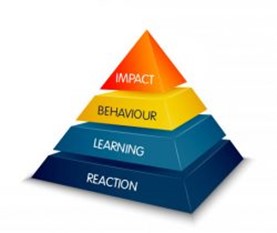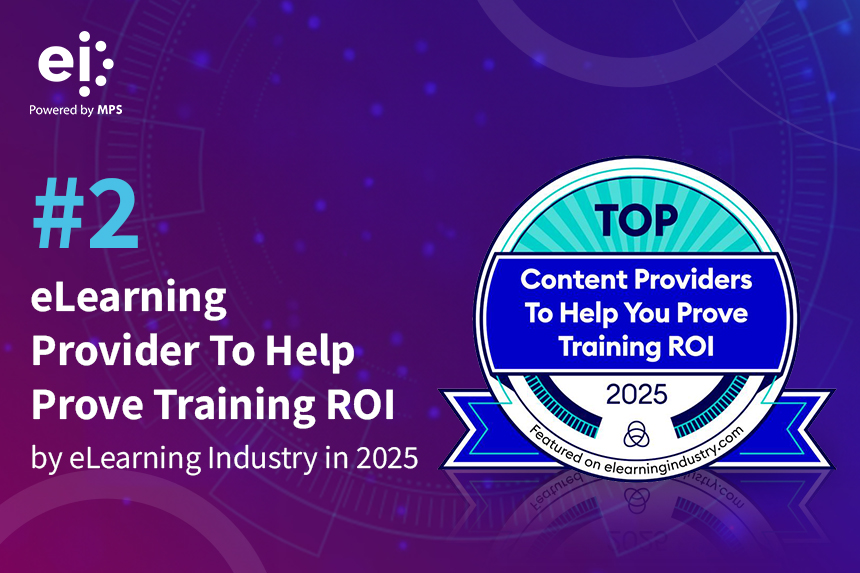
To determine the ROI of your training, you need to measure its impact on both learners and business. This article offers insights on a set of practical cues that can be used to measure the business impact of your training and development programs.
Why Measure the Business Impact of Training?
In the modern business environment that observes constant changes, Learning and Development (L&D) has to shift from being a service provider to a strategic partner. This development is important as L&D is central to the effort of integrating training programs in as far as the strategic goals of the organization are concerned, ensuring employee skills are relevant in a fast changing business world.
To check if learning efforts back up and push business goals, it’s crucial to measure how training impacts the business. Effective evaluation methods provide valuable insights into how well training aligns with and supports business objectives. This allows organizations to fine-tune their L&D plans to get better results and sustained growth.
What Are the Inherent Challenges in Measuring the Business Impact of Your Training and Development Programs?
- Competing Priorities: Measurement tasks frequently take precedence over other pressing obligations, which makes assessing the effectiveness of training less important.
- Limited Resources: The efficacy of measuring initiatives can be severely hampered by low funding, insufficient staff, and antiquated technology, which makes it challenging to collect and evaluate pertinent data.
- Absence of Analytics Skills: A lot of organizations struggle to find specialized analytics knowledge for their learning and development teams, which makes it harder for them to evaluate and comprehend training outcome data.
- Problems with Data Access: Difficulties obtaining and incorporating the relevant data might make it difficult to monitor and analyze the impact of learning, which can result in assessments that are erroneous or incomplete.
- Uncertain Starting Point: Inconsistent methods and challenges in developing significant metrics might arise from uncertainty over where to begin measuring the impact of learning.
While there is no debate on the need to measure the business impact of the corporate training and development programs, there are several inherent challenges in this exercise. The key factor being that there is no easy way to obtain analytics that can measure the business impact.
The L&D teams are constrained by the fact that the standard reports from the LMS are not able to measure the impact. Even if they know what should be done, they often do not have the resources (team and tools) to collate the additional data, analyze it, and draw actionable insights.
On account of this, this exercise either never gets attempted or takes an inordinately long time. By the time the insights come in, it may be too late for the business to apply them. As a result, you are likely to see that the training investment in a given financial year may not impact the business goals in the same year, as planned.
What Should Be the Way Forward to Help You Measure the Business Impact of Your Training and Development Programs?
The first correction needs to be done at the beginning of the exercise, that is, during the Training Needs Analysis (TNA) phase. Typically, at this stage, the metrics that will be used to determine if the training effectiveness and impact are established.
Learning Metrics: Traditional metrics like completion rates and learner satisfaction provide initial insights into the training experience but fall short of demonstrating true effectiveness. While these metrics offer a snapshot of participant engagement and feedback, they do not fully capture how training impacts business performance.
Business Metrics: For a more comprehensive assessment, focus on business metrics that directly relate to organizational outcomes, such as increased revenue and productivity improvements. These metrics reveal how well training contributes to strategic goals and operational efficiency, providing a clearer picture of its impact on the organization’s success. Embracing a technology-driven approach, such as the NexGen ROI model, can further enhance this analysis by integrating advanced analytics and real-time data to align training with business objectives effectively.
L&D teams typically look at the following metrics:
- The number of training registrations and completion rates.
- Learner reaction/feedback on the training/the trainer.
- Assessment scores (to assess training effectiveness).
The correct way forward is in combining the evaluation through L&D metrics as well as business metrics. The focus on the L&D metrics alone is inadequate in helping you get the impact on business. Only by coupling them will you be able to determine the impact of the training on business.
Take a look at this example to understand the value you get as you couple both L&D and business metrics.
Background: An organization invests in an enterprise-wide CRM tool for their Sales and Marketing teams. The new tool is planned to replace the multiple legacy tools and Excel-based trackers over a short period of 6 months.
Training need: The entire Sales and Marketing team needs to undergo training for the new CRM tool. The L&D team maps the training to the following profiles:
Set 1: Sales Executives, Sales Managers, and Head of Sales – Maps to acquiring three levels of tool proficiency.
Set 2: Marketing team.
Set 3: CEO and COO – Dashboard review – with a focus on analysis and actionable insights.
The L&D team plans the training modules to achieve the required proficiency levels, across the three audience profiles. The assessment scores are the selected indicators to validate the proficiency gain.
The Missing Business Metrics: What wasn’t discussed with the business (Sales and Marketing teams) was that once the team members have the requisite proficiency in the new tool, what is the anticipated business gain, and how should it be measured?
For instance, the Sales reps will save 1 hour/day once they move to the new tool (instead of wading through multiple Excel trackers) and this time could be used to step up their target by 12.5%.
Now, this impacts the business directly and is a great way to ascertain the impact of the planned CRM training on business.
Remember: If this collaborative quantification (coupling of L&D metrics and business metrics) isn’t done upfront in the project, it would be impossible to track and measure the business impact of the training. This exercise (to couple the L&D metrics with the business metrics) needs a strong collaboration between the L&D team and the business team. During the TNA phase, the parameters that can help ascertain the business impact of the training must be identified.
How Can You Measure the Business Impact of Your Training and Development Programs?
A good approach is the adaptation of the Kirkpatrick’s model of training evaluation to measure not only training effectiveness but also its impact on business. However, to address the evolving needs of modern businesses, incorporating NexGen ROI can enhance this evaluation process. Here’s how you can integrate these models:

Level 1: Reaction
Objective: The exercise begins with ascertaining the learners’ reaction. Typical insights sought are if the learners found the training to be relevant, engaging, and easy to internalize and apply.
How is this done: This is typically done through polls and online surveys.
NexGen ROI Insight: While traditional feedback captures initial reactions, NexGen ROI emphasizes the importance of aligning this feedback with business goals to ensure that training meets broader organizational objectives.
Level 2: Learning
Objective: At this stage, the validation is done if the training’s learning outcomes were met.
How is this done: The right assessment strategy is critical in determining if the required cognition levels were met. Hence, the key measure at this stage are the scores of the summative assessment.
NexGen ROI Insight: NexGen ROI adds value by integrating advanced analytics to evaluate learning outcomes in relation to strategic business metrics, providing a deeper understanding of how learning impacts organizational goals.
Level 3: Behavior
Objective: At this stage, the validation is done if there is a change in the learner behavior that is directly attributable to the training.
How is this done: This is typically done by polling the learners and their supervisors after 30/60/90 days, and a validation of the required gain is done. The gain is measured through a combination of L&D metrics and, more specifically, business metrics.
NexGen ROI Insight: This stage is enhanced by NexGen ROI’s real-time data and advanced analytics, which offer a more nuanced view of how learning translates into behavior changes that drive business success.
Level 4: Impact
Objective: At this stage, validation is done if the training created the required value for business and was able to impact the business KPIs.
How is this done: This is done by tracking the parameters captured in the business metrics.
NexGen ROI Insight: NexGen ROI provides a comprehensive approach to impact measurement by linking learning metrics with business metrics. This guarantees that the importance of training is directly associated with the success of the organization and offers a thorough understanding of how learning outcomes influence business performance and strategic objectives.
Communicating L&D Value to Business Leaders
To get business leaders to consider the worth of L&D, we need to present training results. People will see if initiatives are a part of the broader strategic aims of the organization and carry the message to business leaders in terms that link L&D with business outcomes by using carrot metrics like productivity enhancements, cost savings, or revenue growth.
To align with business priorities, concentrate on how L&D helps to overcome key gaps in skills and aids in reaching the overall strategic goals. For example, if digital transformation is a goal, highlight how training programs equip employees with essential digital skills, directly contributing to the company’s objectives.
To showcase the business impact of L&D, use metrics such as employee engagement survey results, talent acquisition savings, and employee mobility. Engagement metrics like total members and learning hours, along with quality measures such as Net Promoter Scores and course ratings, help illustrate how training drives performance improvements. Highlighting these metrics and success stories strengthens the case for continued L&D investment.
Common Pitfalls in Measuring Training Impact
- Undefined Measurement Plan:
Lack of a clear measurement strategy leads to ineffective evaluation. Establish goals and metrics before developing content to ensure alignment with business objectives from the start.
- Insufficient Data Collection:
Inadequate data access and planning hinder effective measurement. Collaborate with internal data teams to understand data needs and integration, and plan data collection and reporting timelines in advance.
- Rapid Shift to New Metrics:
Shifting metrics prematurely can obscure valuable insights. Balance short-term results with long-term goals to set realistic expectations and accurately assess learning impact.
- Succumbing to Content Chaos:
An overload of content and initiatives can complicate measurement. Focus on a clear, outcome-driven KPI and limit the number of courses to simplify evaluation and enhance effectiveness.
- Ineffective ROI Communication:
Failing to connect metrics to business goals undermines the perceived value of training. Emphasize metrics that reflect cost savings and revenue growth to effectively communicate ROI and gain stakeholder support.
The Future of Measuring Training Impact
As organizations look to the future, AI and advanced data analytics are set to transform training impact measurement. AI’s capability to analyze extensive data and predict outcomes offers a more nuanced understanding of training effectiveness. This transition from traditional metrics, like course completion rates, to AI-driven insights enables organizations to gain actionable insights into how learning initiatives align with and advance business goals.
Emerging trends emphasize AI’s role in refining L&D strategies by providing real-time feedback and personalized learning experiences. Predictive analytics can forecast future skill needs and align KPIs with business objectives, ensuring L&D adapts to evolving demands and contributes effectively to business success. To fully leverage AI, organizations must implement robust data strategies that ensure quality data collection and address privacy and ethical concerns.
Parting Thoughts
Determining the business impact of your training and development programs is a complex exercise – with several inherent challenges. Hope this article provides easy to apply cues that you can use to effectively measure the business impact of your trainings.



